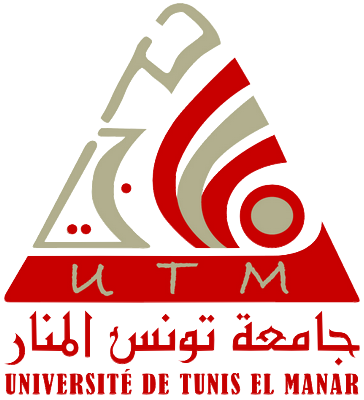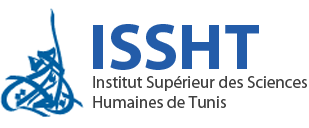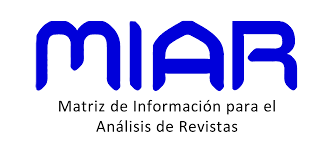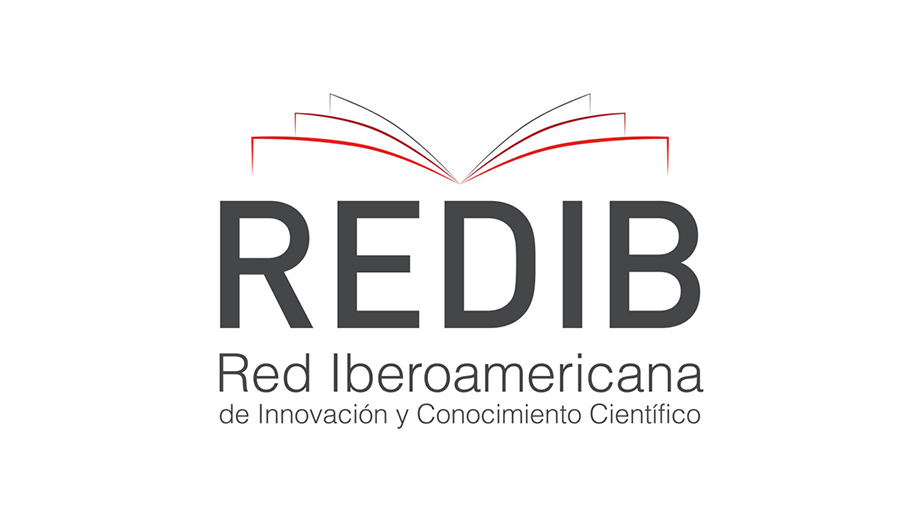Pragmatic Transference Processes of Moroccan Arabic in the Peninsular Spanish Acquisition. The Greetings’ Domain
DOI:
https://doi.org/10.71564/dh.vi3.34Keywords:
Pragmatics, Acquisition, Spanish as Foreign Language, Native Speakers of Arabic Language, GreetingsAbstract
This paper analyzes the linguistic-pragmatic behavior of ELE learners whose first language is Moroccan Arabic with regards to greetings. The aim of this research is to investigate if there are significant differences in this context among them and the native peninsular Spanish speakers. With this purpose, we have interviewed them and the answers have been categorized and compared by Fisher Test. As a result of this investigation, we have found several differences based on the influence of L1. We have seen that, in asymmetrical situations, explicit instruction in the classroom and the creation of new materials is crucial. The differences obtained can lead to other problems of coexistence in multicultural environment.
Downloads
References
AIXELÀ CABRÉ, Yolanda (2000). Mujeres en Marruecos: un análisis desde el parentesco y el género. Barcelona: Ediciones Bellaterra.
ALAOUI, Sakina M. (2011). “Politeness Principle: A Comparative Study of English and Moroccan Arabic Requests, Offers and Thanks”. European Journal of Social Sciences, 20 (1): 7-14.
ALONSO, Rosario (1990). “Competencia comunicativa y cortesía”. Actas del I Congreso de Asele. Granada: Universidad de Granada, 43-52.
ANSSARI NAIM, Saida (2011). The Speech Acts in Moroccan Arabic: An Intercultural Approach. València: Universitat de València Press.
BARDOVI-HARLIG, Kathleen (2001). “Evaluating the Empirical Evidence: Grounds for Instructions in Pragmatics”. En Kenneth R. ROSE y Gabriele KASPER (eds.). Pragmatics in Language Teaching. Cambridge: Cambridge University Press, 13-32.
BEINHAUER, Walter (1963). El español coloquial. Madrid: Gredos.
BLUM-KULKA, Shoshana (1996). “Introducción a la pragmática del interlenguaje”. En Jasone CENOZ y José F. VALENCIA (eds.). La competencia pragmática: elementos lingüísticos y psicosociales. Bilbao: Servicio Editorial de la Universidad del País Vasco, 155-175.
BLUM-KULKA, Shoshana y Elite OLSHTAIN (1984). “Requests and Apologies: A Cross-Cultural Study of Speech Act Realization Patterns (CCSARP)”. Applied Linguistics, 5 (3): 196-213.
BROWN, Penélope y Stephen LEVINSON (1987). Politeness. Some Universals in Language Usage. Cambridge: Cambridge University Press.
CANNA, Elena (2012). “Bonjour, ça va? Labasʕale-ik? French and Arabic in Casablanca”. En Reem BASSIOUNEY y Graham KATZ (eds.). Arabic Language and Linguistics. Washington DC: Georgetown University Press, 137-144.
CHAKRANI, Brahim (2015). “Arabic Interdialectal Encounters: Investigating the Influence of Attitudes on Language Accommodation”. Language & Communication, 41: 17-27.
CHEN, Guo-Ming y William J. STAROSTA (1996). “Intercultural Communication Competence: a Synthesis”. Annals of the International Comunication Association, 19 (1): 353-383.
CONSEJO DE EUROPA (2001). Marco Común Europeo de Referencia para las lenguas: aprendizaje, enseñanza, evaluación. En Instituto Cervantes, Ministerio de Educación, Cultura y Deporte. Madrid: Anaya.
D’ANNA, Lucca (2014). “Some Aspects of Verbal Politeness in Maghrebi Arabic Dialects”. RiCOGNIZIONI. Rivista di Lingue, Letterature Straniere e Culture Moderne, 2 (1): 27-39.
ELYASIN, Zoya (2014). “Los saludos como estrategia conversacional: variaciones socioculturales”. En Actas de XI Congreso Internacional de Lingüística General. Pamplona: Universidad de Navarra.
ESCANDELL VIDAL, María Victoria (1996). “Los fenómenos de interferencia pragmática”. En Neus SANS et al. (eds.). Didáctica del español como lengua extranjera, ELE, n.º 3. Madrid, 95-109.
——— (2004): “Aportaciones de la pragmática”. En Jesús Sánchez LOBATO y Isabel SANTOS GARGALLO (eds.). Vademécum para la formación de profesores. Enseñar español como segunda lengua (L2) / lengua extranjera (LE). Madrid: SGEL, 179-197.
GILES, Howard y Patricia JOHNSON (1987). “Ethnolinguistic Identity Theory: a Social Psychological Approach to Language Maintenance”. International Journal of the Sociology of Language, 68: 69-100.
GOFFMAN , Erving (1971). Ritual de la interacción. Madrid: Tiempo Contemporáneo.
——— (1974). Frame Analysis: An Essay on the Organization of Experience. Cambridge: Harvard University Press.
GUMPERZ, John J. (1994) [1.ª ed. 1982]. Discourse Strategies. Cambridge: Cambridge University Press.
HALL, Edward T. (1978). Más allá de la cultura. Barcelona: Editorial Gustavo Gili.
HERNÁNDEZ, César (1999). Culturas y acción comunicativa. Introducción a la pragmática intercultural. Barcelona: Octaedro.
HERRERO MUÑOZ-COBO, Bárbara (1996). “La situación lingüística marroquí: contacto de lenguas en Marruecos”. En Juan GOYTISOLO y Bernabé LÓPEZ GARCÍA (eds.). Atlas de la inmigración magrebí en España. Madrid: UAM Ediciones, 44-45.
——— (2008). “Las formas de tratamiento en árabe marroquí. Lengua e identidad”. Estudios de dialectología norteafricana y andalusí, 12: 93-103
JANICKOVA, Katerina (2010). La fórmula de cortesía en el acto de habla expresivo. Brno, República Checa: Masarykova Univerzita.
JESSNER, Ulrike (1996). “La transferencia en la adquisición de la segunda lengua”. En Jasone CENOZ y José F. VALENCIA (eds.). La competencia pragmática: elementos lingüísticos y psicosociales. Bilbao: Servicio Editorial de la Universidad del País Vasco, 141-153.
KASPER, Gabriele y Rose SCHMIDT (1996). “Developmental Issues in Interlanguage Pragmatics”. Studies in Second Language Acquisition, 18 (2): 149-169.
KASPER, Gabriele y Kenneth ROSE (2001). “Pragmatics in Language Teaching”. Pragmatics in Language Teaching. Cambridge: CUP, 33-60.
LAVER, John (1981). “Linguistic Routines and Politeness in Greeting and Parting”. En Florian COULMAS (ed.). Conversational Routine. The Hague: Mouton de Gruyter, 289-304.
MIQUEL, Lourdes y Neus SANS (1997). “Lengua y cultura desde una perspectiva pragmática: algunos ejemplos aplicados al español”. Frecuencia L, 5: 3-14.
OLIVERAS, Angels (2002). Hacia la competencia intercultural en el aprendizaje de una lengua extranjera. Madrid: Edinumen S.A.
ORTÍ, Roberto (2002). “Estudio de la competencia intercultural a partir del análisis sociocultural de interacciones orales con arabohablantes”. Revista electrónica de estudios filológicos, 8 [http://www.um.es/tonosdigital/znum8/estudios/16-publicroberto.htm].
——— (2003). “Análisis de interacciones comunicativas interculturales entre hablantes árabes e hispanohablantes desde una perspectiva didáctica”. Grupo CRIT: Claves para la comunicación intercultural. Castellón: Universitat Jaume I, 89-122.
——— (2007a). “El tratamiento de estereotipos negativos a partir de los patrones comunicativos culturales”. Típica, Boletín Electrónico de Salud Escolar, 3(1): 1-15.
——— (2007b). “Culturas cara a cara: didáctica de la comunicación intercultural”. En Luis Ñiguel MOSCOSO FRANCISCO y Nadi HAMDI NOUAOURI (eds.). Actas del segundo congreso árabe marroquí: estudio, enseñanza, aprendizaje. Universidad de Cádiz: Servicio de Publicaciones, 155-188.
RAGA GIMENO, Francisco y Enric SÁNCHEZ LÓPEZ (1999). “La problemática de la toma de turnos en la comunicación intercultural”. En Jesús FERNÁNDEZ GONZÁLEZ et al. (eds.). Lingüística para el siglo XXI, I. Salamanca: Universidad de Salamanca, 1349-1357.
RAGA GIMENO, Francisco (2006). “Grupo CRIT: Comunicación intercultural y mediación en el ámbito sociosanitario”. En Carmen VALERO y Francisco RAGA (eds.). Retos del Siglo XXI para la lingüística aplicada: Nuevo mapa lingüístico y cultural de la Península Ibérica. Revista española de Lingüística aplica (RESLA), 1: 217-230.
RODRIGO ALSINA, Miguel (1999). Comunicación intercultural. Barcelona: Anthropos Editorial.
SALGADO, Rosa (2007). “La realidad lingüística actual de Marruecos”. Revista Global Affairs, 5: 58-62.
SAVILLE-TROIKE, Muriel (1982). The Ethnography of Communication: An Introduction, XIV. Londres: Basil Blakwell.
SCIEFFELIN, Bambi y Elinor OCHS, eds. (1986). Language Socialization across Cultures. Cambridge: Cambridge University Press.
SIEGAL, Mark (1994). Second Language Learning. Looking Est: Learning Japanese and the Interaction of Race, Gender and Social Context. Tesis doctoral inédita. University of Berkley.
Downloads
Published
How to Cite
Issue
Section
License
Copyright (c) 2016 María del Carmen Vicente Molinero - María del Carmen Horno Chéliz

This work is licensed under a Creative Commons Attribution-NonCommercial 4.0 International License.
Los autores que publican en esta revista están de acuerdo con los siguientes términos:
Los autores conservan los derechos de autor y garantizan a la revista el derecho de ser la primera publicación del trabajo al igual que licenciado bajo una Creative Commons Attribution License que permite a otros compartir el trabajo con un reconocimiento de la autoría del trabajo y la publicación inicial en esta revista, sin hacer uso del material con propósitos comerciales.
Los autores pueden establecer por separado acuerdos adicionales para la distribución no exclusiva de la versión de la obra publicada en la revista (por ejemplo, situarlo en un repositorio institucional o publicarlo en un libro), con un reconocimiento de su publicación inicial en esta revista.
Se permite y se anima a los autores a difundir sus trabajos electrónicamente (por ejemplo, en repositorios institucionales o en su propio sitio web) antes y durante el proceso de envío, ya que puede dar lugar a intercambios productivos, así como a una citación más temprana y mayor de los trabajos publicados.































